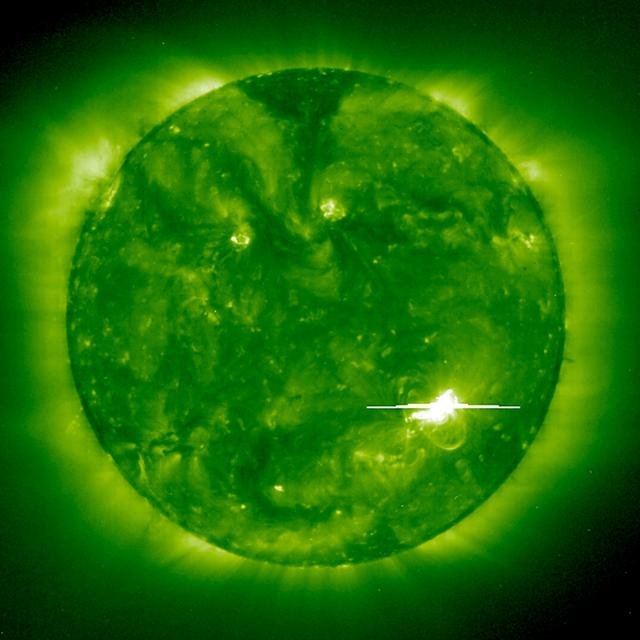Worldsfeed News Desk: On March 28th, Earth experienced the impact of a potent X-class solar flare, originating from the lower regions of the sun. Satellites operated by the National Oceanic and Atmospheric Administration (NOAA) swiftly detected this remarkable event, which peaked at 4:56 p.m. ET, marking it as an X1.1 flare. These X-class flares represent the most formidable explosions the sun can unleash, as explained by NASA.
The sheer force of this eruption was sufficient to ionize a segment of Earth’s atmosphere, leading to a significant shortwave radio blackout over the expanse of the Pacific Ocean, as detailed by SpaceWeather.com. Moreover, accompanying this solar burst was an extensive coronal mass ejection (CME), a colossal release of plasma. Initial concerns were raised among NOAA scientists regarding a potential collision of the CME with Earth, which could have precipitated a geomagnetic storm, affecting satellite operations and communication networks. However, reassurance came on the following day when NOAA confirmed that the outburst would likely bypass Earth.
Solar flares such as these are colossal explosions occurring on the sun’s surface when twisted magnetic field lines suddenly rupture, emitting intense bursts of electromagnetic radiation, according to Space.com. This recent solar event follows closely on the heels of a double X-class flare recorded on March 25th, which instigated the most potent geomagnetic storm witnessed on Earth in six years. The unique aspect of this event was its composition of two simultaneous explosions, termed a sympathetic solar flare.
The frequency of consecutive solar events has led scientists to speculate that the sun might have entered an era of heightened activity, potentially signaling an early onset of solar maximum, the phase in the sun’s 11-year solar cycle marked by elevated solar activity. However, conclusive evidence regarding this hypothesis awaits the eventual subsiding of solar turbulence.
X-class flares are most commonly observed during solar maximum, a phase characterized by intense solar activity. In 2024 alone, seven X-class flares, including the recent occurrence, have emanated from the sun, already accounting for half the number that reached Earth in the preceding year, as reported by Live Science. This surge in solar activity underscores the dynamic and captivating nature of our closest star, prompting scientists to continue monitoring its behavior with keen interest.


0 Comments